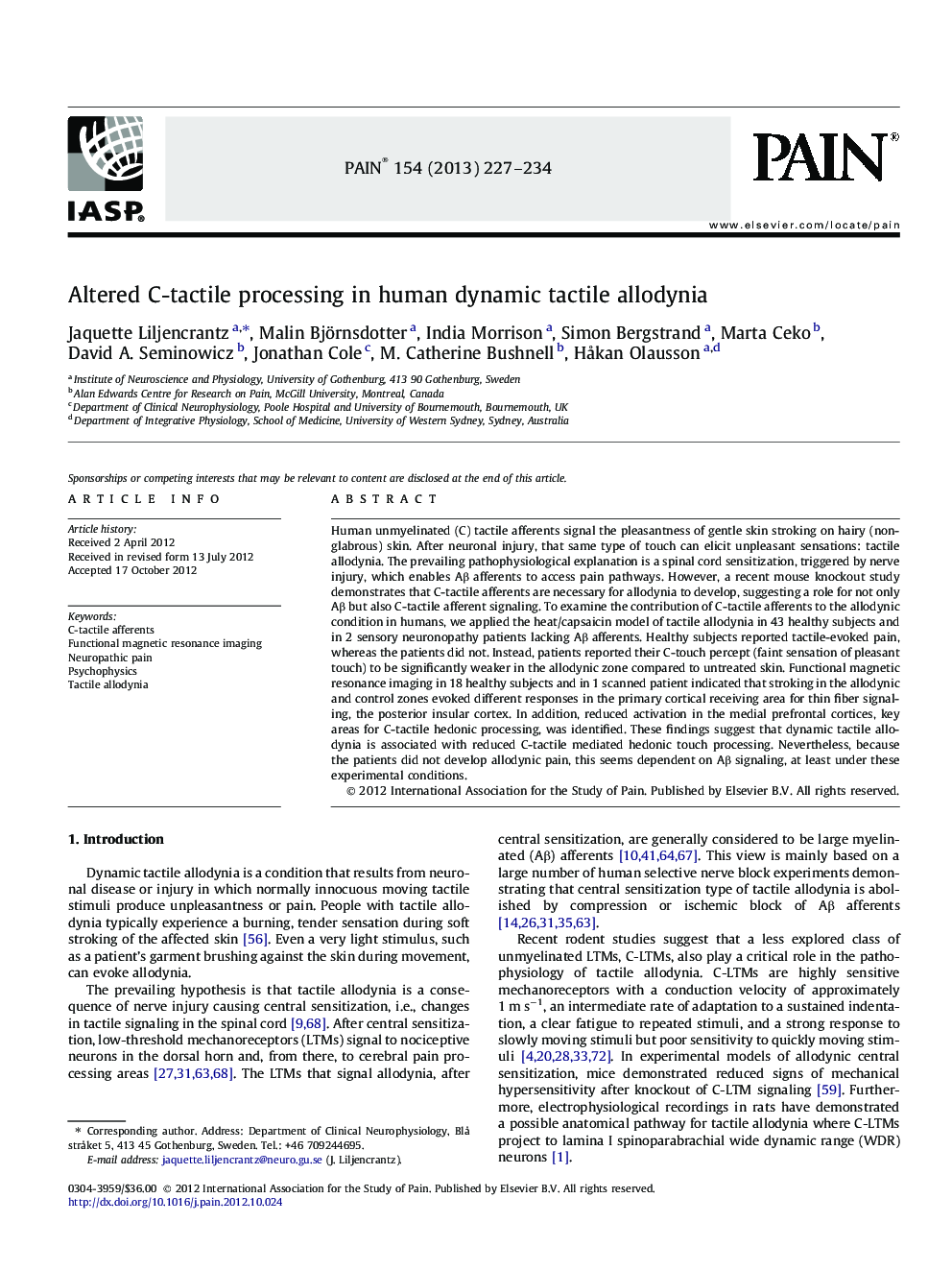| کد مقاله | کد نشریه | سال انتشار | مقاله انگلیسی | نسخه تمام متن |
|---|---|---|---|---|
| 913797 | 918352 | 2013 | 8 صفحه PDF | دانلود رایگان |
عنوان انگلیسی مقاله ISI
Altered C-tactile processing in human dynamic tactile allodynia
دانلود مقاله + سفارش ترجمه
دانلود مقاله ISI انگلیسی
رایگان برای ایرانیان
کلمات کلیدی
موضوعات مرتبط
علوم زیستی و بیوفناوری
علم عصب شناسی
علوم اعصاب سلولی و مولکولی
پیش نمایش صفحه اول مقاله

چکیده انگلیسی
Human unmyelinated (C) tactile afferents signal the pleasantness of gentle skin stroking on hairy (nonglabrous) skin. After neuronal injury, that same type of touch can elicit unpleasant sensations: tactile allodynia. The prevailing pathophysiological explanation is a spinal cord sensitization, triggered by nerve injury, which enables Aβ afferents to access pain pathways. However, a recent mouse knockout study demonstrates that C-tactile afferents are necessary for allodynia to develop, suggesting a role for not only Aβ but also C-tactile afferent signaling. To examine the contribution of C-tactile afferents to the allodynic condition in humans, we applied the heat/capsaicin model of tactile allodynia in 43 healthy subjects and in 2 sensory neuronopathy patients lacking Aβ afferents. Healthy subjects reported tactile-evoked pain, whereas the patients did not. Instead, patients reported their C-touch percept (faint sensation of pleasant touch) to be significantly weaker in the allodynic zone compared to untreated skin. Functional magnetic resonance imaging in 18 healthy subjects and in 1 scanned patient indicated that stroking in the allodynic and control zones evoked different responses in the primary cortical receiving area for thin fiber signaling, the posterior insular cortex. In addition, reduced activation in the medial prefrontal cortices, key areas for C-tactile hedonic processing, was identified. These findings suggest that dynamic tactile allodynia is associated with reduced C-tactile mediated hedonic touch processing. Nevertheless, because the patients did not develop allodynic pain, this seems dependent on Aβ signaling, at least under these experimental conditions.
ناشر
Database: Elsevier - ScienceDirect (ساینس دایرکت)
Journal: PAIN - Volume 154, Issue 2, February 2013, Pages 227-234
Journal: PAIN - Volume 154, Issue 2, February 2013, Pages 227-234
نویسندگان
Jaquette Liljencrantz, Malin Björnsdotter, India Morrison, Simon Bergstrand, Marta Ceko, David A. Seminowicz, Jonathan Cole, M. Catherine Bushnell, HÃ¥kan Olausson,